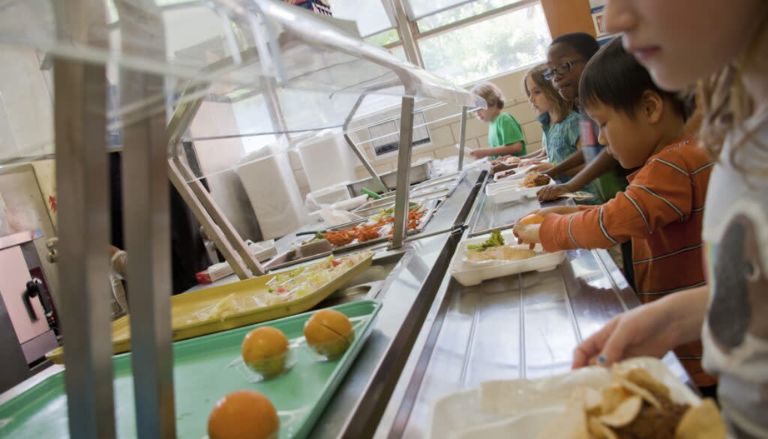The federal government is looking for ways to save money and pay for programs from the Trump administration. A congressional group is thinking about reducing funding, which could take billions away from school breakfast and lunch programs.
That cut could affect over 280,000 children and 728 schools in Ohio, based on information from the Food Research & Action Center.
FRAC recognized this loss from a plan being discussed by the Republican-led U.S. House Ways and Means Committee — the membership of which includes Ohio Reps. Mike Carey and Max Miller — as part of upcoming budget reconciliation in the Capitol. The plan would cut $3 billion from school breakfast and lunch services.
Erin Hysom and Alexis Bylander from FRAC say that removing the free breakfast and lunch program for local schools would lead to more hungry students in classrooms, create extra paperwork for families and schools, increase unpaid school meal debts, and make students feel embarrassed about their meals.
The plan will affect schools that are not part of the Community Eligibility Provision. This service is part of the government’s National School Lunch Program and helps schools in low-income areas provide free meals to students.
Schools can qualify for CEP if they participate in programs like SNAP and TANF.
According to a summary of the proposal among a list of possible budget reconciliation plans obtained by Politico, the CEP eligibility would be raised from the previous level of schools with 40% involvement in the other federal programs to 60%.
Hysom and Bylander say the new plan would make it harder for schools to qualify for the CEP program. This change could affect over 24,000 schools across the country and 12 million children, including more than 280,000 kids in Ohio.
The Children’s Defense Fund-Ohio stated that the proposed changes would affect more children in Ohio than the number of people living in Toledo, which is the state’s fourth-largest city.
Dr. John Stanford, state director of CDF-Ohio, told the Capital Journal that free meals can greatly benefit our students’ mental, social, and physical well-being. This is particularly important for parents who are doing their best to support their children while managing work responsibilities and rising living costs.
Stanford noted that a poll by a Republican research company in 2024 found most people in Ohio favor free breakfast and lunch programs for public schools.
“Why would our lawmakers in Washington want to create a law that goes against what everyone in Ohio wants and makes it harder for students to get free meals by adding more paperwork for schools?” Stanford asked.
A study from CDF-Ohio in 2023 revealed that 1 in 6 children live in homes where they face hunger. It also found that more than 1 in 3 of those children in food-insecure households do not qualify for school meals.

Stanford and FRAC believe the changes suggested by the Ways and Means Committee could cause more students to miss out on getting free or reduced meals because they would need to show proof of income to apply. The meal programs had fewer participants because the special rules that helped with school food costs during the COVID-19 pandemic ended.
Ohio experienced a 14% decrease in the number of students taking lunch because the waivers were no longer available.
“We need our lawmakers to focus on helping children and not on making unnecessary rules for a successful program based on proven methods,” Stanford said. “This proposal would have the opposite effect.”
In 2023, the state used its funds to provide free meals for students who were eligible for reduced-price meals and those who already qualified for free meals. However, they did not extend this to all students. The state is planning to approve another budget this year. This will include discussions with a new House Speaker and Senate President in charge.







Leave a Comment